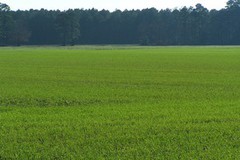Ukrainian winter cereals in fair condition

The long rain-free period (20-25 days in most regions), high air and soil temperatures, hot winds contributed to rapid drying and heating of the topsoil (up to +51-610С). In many areas (particularly in the south), soil moisture content in the one-meter layer also decreased. However, this layer still contained largely optimum amounts of productive soil moisture in most fields under winter crops, except for most of Kherson region and some parts of Zaporizhia and Mykolaiv regions, where soil drought developed. Topsoil supply of productive moisture fell substantially in the southeast of the country; the 10-cm layer was absolutely dry in spots.
Effective heat accumulated at a rapid pace, typical for the recent years (except for 2017). At the end of April, the average daily air temperature exceeded +150С and the meteorological summer began (on average 2-4 weeks ahead of its normal arrival). The extraordinarily intensive buildup of heat accelerated the pace of growth in all crops. In many fields, winter crops were exposed to an adverse factor such as the development and persistence of a thick soil crust, which prevented the formation of adequate secondary roots in plants. High air and soil temperatures curbed initial growth and development of early spring cereals massively sown in mid-April, which were already at the stages of emergence and early leaf formation late in the month.
In general, winter grains were in comparatively fair condition on May 9-10, but it may deteriorate substantially if the dry, hot weather continues, UkrAgroConsult’s analysts note.
Early spring spiked cereals and corn of early sowing dates are now at the stages of emergence and intensive leaf growth that indicates the beginning of tillering. Pulses are at the stages of emergence and early stem elongation.
IC UAC
- 1276 reads







